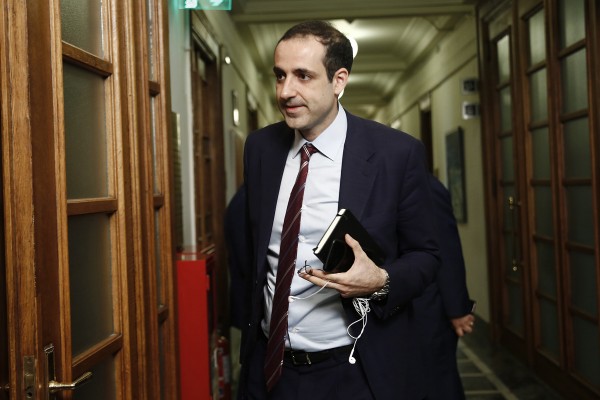Local Journalism Project Case Study: Khabar Lahariya
Backstory:
Khabar Lahariya offers hyper-local watchdog journalism with a feminist lens. Founded by a Delhi-based NGO as a weekly print edition in 2002, Khabar Lahariya began as a women’s collective led by a group of urban and rural feminists. Eighteen years later, the “country’s only digital rural network” is thriving, employing about 40 women journalists from socially and economically marginalized groups to report on issues that directly impact their communities. Now fully digital, their award-winning model has been recognized internationally, having received the UNESCO King Sejong Prize in 2009.
Audience:
Khabar Lahariya, which translates as “news wave”, now reaches a monthly audience of up to 10 million people from marginalized communities in rural Uttar Pradesh, Madhya Pradesh, and western Bihar. These states share similarities in their display of gender inequity, structural inequity, and caste inequity.
Their subscription model has attracted mostly people from their English-speaking, global audiences among the Indian diaspora as well as metropolitan English speakers They are currently looking for ways in which they can diversify their audience and their revenue streams.
Value proposition:
Empowering rural communities, and particularly women from disadvantaged groups through reporting in and on communities in accessible local dialects such as Bundeli and Avadhi. Their feminist perspective aims to challenge the prevailing upper caste, and male-dominated, city-centric journalism. They hope to bring rural and urban women together to produce stories, taking a “bottom-up approach”.
Product and distribution:
Khabar Lahariya began as a printed paper. As smart phones began to dominate, in 2015 they pivoted to producing and distributing video content for YouTube through a news site. Most of Khabar Lahariya’s resources go into training journalists from disadvantaged communities.
Their recent transition into Chambal Media has enabled them to experiment with different forms such as films, podcasts, animations, and screening discussions. They are able to reach local and international audiences through Facebook, Instagram, Twitter, WhatsApp, and TikTok (before it was banned in India). Twitter and Instagram have been popular with their urban digital audience whereas YouTube and Facebook have mainly attracted their rural audience.
The team:
To report on a hyper-local level, expose corruption, and provide accountability journalism for low-income committees, Khabar Lahariya relies on journalists embedded in and from the target communities. Located firmly in conservative social milieus, these journalists routinely face misogyny and abuse. Their rootedness, however, ensures the authenticity of their reporting on rural issues for national media audiences. Their location also allows them to act as credible content suppliers of news and features to NGOs, foundations, and institutions engaged in rural issues.
Business model:
They derive their revenue from philanthropic support, project grants, content agency, and commissioned content. The shift to Chambal Media has made them a for-profit organization rather than a not-for-profit trust. This allows them to look for partnerships that they hadn’t been able to as a not-for-profit trust, and has built their capacity.
They have started experimenting with putting some of the English content behind a paywall, and have adopted a subscription model. The hope is that the recently launched bulk subscription program can become a serious revenue earner at some point.
Trust/Misinformation:
Khabar Lahariya is renowned for its credibility, painstakingly built over 20 years. The paper began covering previously unexplored issues such as mental health and medical care during the COVID-19 pandemic to combat the misinformation crisis that was occurring. As most information coming from top-down was being met with distrust, a taskforce that focused on disseminating information during this time was assembled by the paper.
The future:
Khabar Lahariya has been piloting “Chambal Academy”, which is an online rural journalism course. It has been created to meet the needs of rural women in India, who may not be technologically adept. Rural women will be able to learn from reporters who come from similar backgrounds. A toolkit is also being developed to educate women on digital safety, security, and on identifying misinformation.
The piloted version of the Academy is currently being supported with funding, but once it is fully launched it will be available for purchase by individuals and institutions who want to engage in capacity building.
They currently have a three-year plan, citing the regions in which they wish to expand. It is hoped that some of the students from Chambal Academy will be able to assist with establishing bureaus in these areas.
Ask them about:
The importance of having women with lived experience articulating feminist stories. Diversifying revenue streams.
In their words:
“We’re sort of like a local watchdog with a feminist lens.”
“We do development reporting, but then in a hyper-local context, development reporting also means politics, right? Because how does public money get spent? What are the kinds of corruption and scandals? We expose corruption and the way that public money gets handed around, talking about what kind of welfare schemes are being rolled out, at what point and in what area. How do those actually pan out on the ground?”
“We do a lot of reporting around human rights related to gender and caste. Our crime reporting is also from the lens of examining the perpetrators of crime. Why do certain crimes have impunity? How does violence against women happen? What exactly does it mean? How does it change?”
“All of our stories have that core idea of our rural and urban women coming together, an all-women crew shooting, telling stories with a bottom-up approach.”
Source for information and views in this case study: Interview with Disha Mullick, co-founder, Khabar Lahariya; Pooja Pande, head of strategy; and Priya Thuvassery, executive producer.
This story is part of IPI’s Local Journalism Project. The publication of these case studies – part of IPI’s wider work mapping, networking and supporting quality innovative media serving local communities – is supported by the Friedrich Naumann Foundation.



